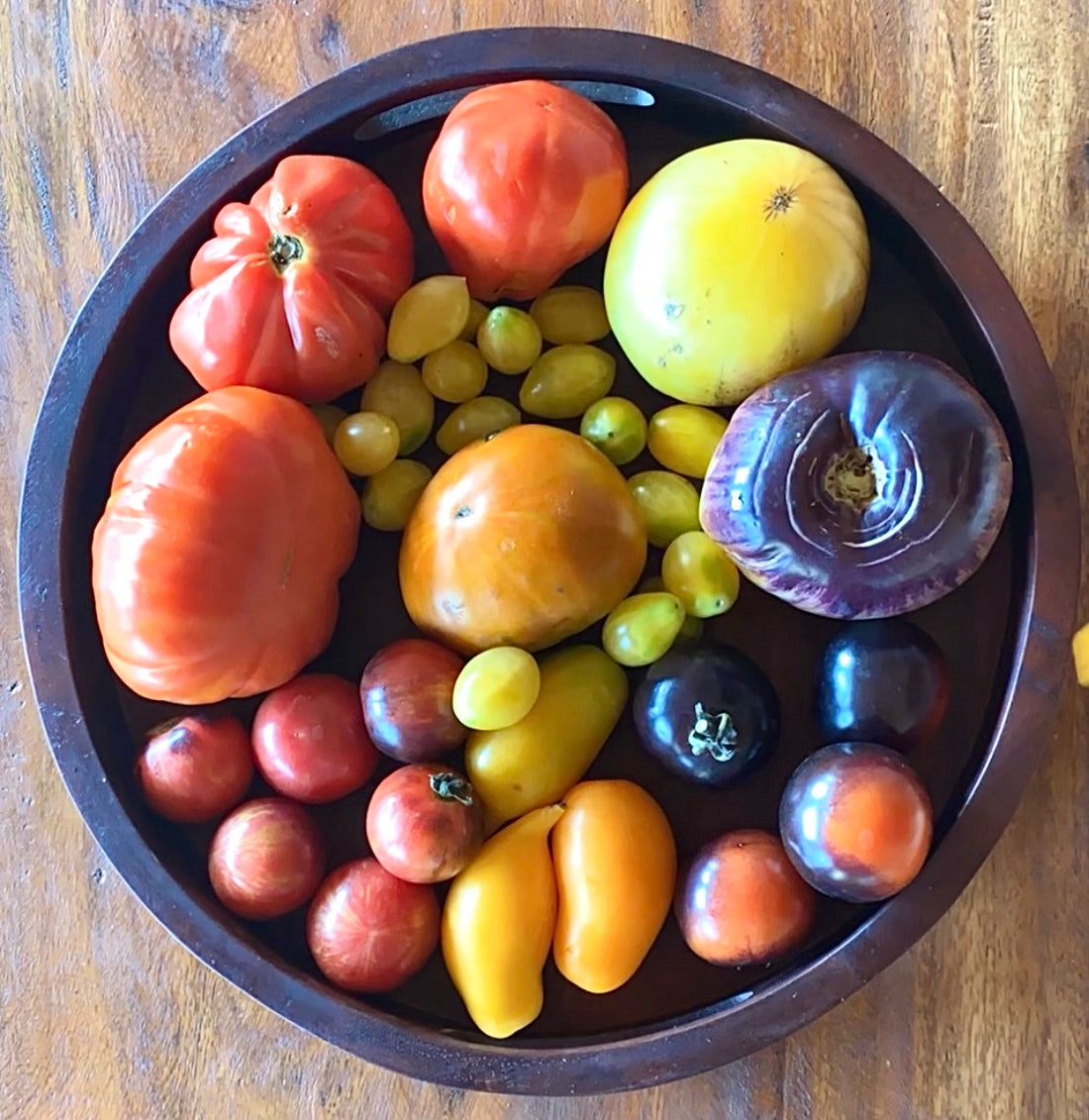Tomatoes are generally high yielding plants and need to be tied to a stake for supporting the fruits. A very satisfying crop to grow that come in several sizes, colors, and shapes. From beef-stakes to cherry tomatoes, different varieties are used for sundried tomatoes, sauces, pastes, slicing, and salads.
Determinate Tomatoes: The common market growing, high yielding varieties. They produce heavily all at once and then the plants die quickly.
Indeterminate Tomatoes: Most heirloom tomato varieties are indeterminate. They start slow, yield less and produce for a longer period of time.
Sowing Style: Sow in the nursery trays and Transplant at true leaf stage.
Time to Sow: Tomatoes do well in warm weather only. Sow in monsoon and transplant after heavy rain period has concluded, early Autumn so they grow through warm winter days, and late winter so that you have fruit all through summer. Sowing them at the beginning of winter might slow down germination and overall growth rates during the cold nights. A greenhouse or cold frame can resolve the issue to some extent.
Plant Spacing: 12-36in with 1.5-3.0ft spacing between rows. Refer to your seed packet or the product page for specific spacing requirements.
Good Companions: Basil, Carrots, Onions, Garlic, Chives, Parsley, Marigold, Nasturtiums, Stinging Nettle, Asparagus
Bad Companions: Brassica Family (Cauliflower, Cabbage, Broccoli, Kohlrabi, Mustards), Corn, Potatoes, Zucchini, Dill, Fennel, Tobacco.
Soil and Cultivation Requirements: Unlike most vegetables, tomatoes like growing in the same place year after year, unless you have issues with disease, in which case you need to plant in a new area. Tomatoes are heavy feeders, and need compost at regular intervals during the growing period, so be generous with how much compost you give them. Too much foliage delays the ripening of fruit, therefore some pruning is required when they are growing. Keep the main stems and selectively pinch some of the side shoots out of the axils. Make sure the plant is getting enough light. So make good use of your balcony grill or chain link fence as a good trellis.
Irrigation: Tomatoes need daily watering until they start flowering. From that point onwards you can cut down the watering to once in 2-3 days or just giving very less water every day. Too much water will cause the fruit to swell and drop. Tomatoes do not like pouring rains and storms, so stall watering plans in such circumstances. Never water tomatoes from the top. The young flowers will drop or will rot and not form fruit. Best way to irrigate it to give water to the roots directly and Drip irrigation is the best method for larger plots.
Harvesting and Storing: Twist each colored fruit off to eat fresh, cook, or preserve. Harvest them green for chutneys or as a vegetable. They store well and longer in cool temperatures. Do not store tomatoes in the refrigerator


